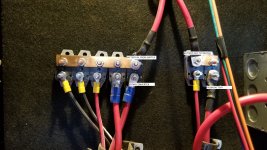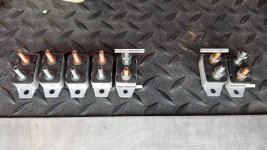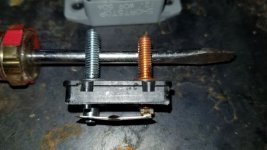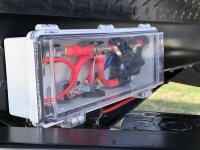6.7LMegaCab
Well-known member
I'm replacing all 7 circuit breakers today but want to ensure they were installed correctly to begin with. I couldn't find any source of information that talked about breaker orientation with respect to converter and battery. I know the copper post would be battery and the silver would be auxiliary (out). But the current setup is not entirely reflected that way.
current setup (all auto-breakers):

how I "think" the new setup should be (the copper bus bars would be connected across the top of both banks):

- Left-bank, the right breaker is for the converter (manual 50A, copper post down), second from right is auto 50A for hydraulics
- right-bank, the far-right breaker would be connected directly to the battery (auto 50A, copper post down)
- All other breakers are 30A
Which one is correct? If it's the first picture, can anyone clarify why the battery and converter would not be on the battery (copper) side of the breakers?
Thank you!
current setup (all auto-breakers):

how I "think" the new setup should be (the copper bus bars would be connected across the top of both banks):

- Left-bank, the right breaker is for the converter (manual 50A, copper post down), second from right is auto 50A for hydraulics
- right-bank, the far-right breaker would be connected directly to the battery (auto 50A, copper post down)
- All other breakers are 30A
Which one is correct? If it's the first picture, can anyone clarify why the battery and converter would not be on the battery (copper) side of the breakers?
Thank you!
Last edited:


